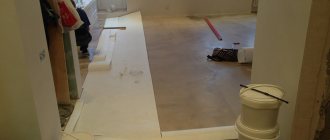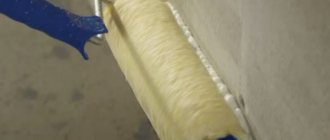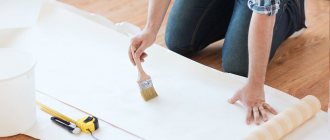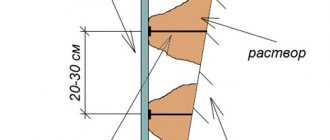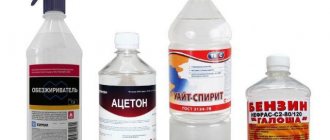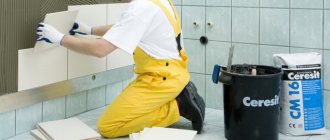- How to clean furniture
You can remove superglue yourself at home using traditional methods, chemicals or mechanical force. The choice of removal method depends on the size of the problem and the type of contaminated surface. In this case, you should start cleaning as quickly as possible, before the substance hardens and is absorbed into the material.
Superglue is used to connect different materials, but when working with it it is important to know how to wash your hands and other surfaces in case of a mistake.
All words with “super-” are spelled together: superman, superglue, supermarket.
The article contains the most effective and affordable methods that will help you quickly and effortlessly clean various objects from superglue.
General recommendations for removing superglue
The high adhesive property of superglue is due to the presence of cyanoacrylate in its composition, which penetrates into all cracks and pores and, when dried, forms a reliable connection. When working with the substance, mistakes often occur and it ends up on the skin of the hands and other surfaces. It is extremely difficult to remove it, since not all solvents are able to cope with this kind of contamination, and if you use inappropriate products, you can harm the items being cleaned.
To quickly and effectively wash superglue, follow these simple recommendations:
- start cleaning as quickly as possible, without allowing the composition to harden;
- do not use a solvent unless you know how it will affect the surface being cleaned;
- When working with chemicals, follow safety precautions - work in a well-ventilated area, wear rubber gloves and a respirator;
- do not use solvent on items intended for preparing or storing food;
- To clean, soak a cotton pad or soft cloth in the chosen product, apply to the stained area and leave for several hours. Then remove the softened composition mechanically and wash the surface with soapy water.
When working with solvent or other chemicals, wear gloves to protect your hands.
How to dissolve stubborn adhesives?
Many people do not know how to dissolve Titan glue, which belongs to the class of very resistant and difficult to remove compounds based on acrylic copolymers. Effective means that help dissolve it are concentrated plumbing acid, gasoline, dimethyl ketone, turpentine, methylbenzene, ethyl acetate. After soaking in these products, it is necessary to remove the residues mechanically.
When choosing a method for dissolving epoxy glue, you should remember that this will have a significant impact on the performance properties of the final polymer. The addition of solvents helps reduce viscosity, and the strength and water resistance characteristics of the product deteriorate. Suitable for dilution are acetone and denatured alcohol, which can evaporate quickly without remaining in the resin.
When choosing a product to dissolve rubber or 88 glue in case of drying, you can choose gasoline, since it is included in their composition. Dilute the adhesive composition to the consistency of liquid sour cream so that it does not drain from the roller.
Key factors to consider when breeding:
- 1. Adding a solvent significantly reduces the viscosity and strength of the polymer.
- 2. The service life of the adhesive and its curing period are increased.
- 3. Dilution causes the resin to shrink, which increases microcracks.
- 4. The color of the polymer changes.
- 5. Increases fluidity on verticals.
Each of us has had to deal with the problem of removing glue from surfaces such as plastic, wood, laminate, linoleum, clothing, etc. But the question always arises: how can you dissolve Superglue, Moment, PVA, PVC, Titanium and other most popular adhesive bases? There are many ways you can dissolve glue. In our article we will look at the most useful and practical tips on how to quickly remove glue using modern means.
Chemicals for removing superglue
To remove instant adhesive, chemicals and solvents are most often used. They are effective for cleaning various surfaces, but should not be used for the purpose of washing hands. Below are effective ways to remove superglue.
Anticlean
A special product will help - “Anti-glue”, which is produced by various companies, Henkel and others. It effectively removes cyanoacrylate composition from various materials, with the exception of plastic, painted and varnished. Before use, carefully read the instructions and act in strict accordance with the recommendations.
A specialized product, Anti-Glue, will help you quickly and effectively wash off the adhesive.
Acetone
An aggressive solvent will effectively remove traces of glue, but when working with it, follow safety precautions - wear rubber gloves and a respirator, avoid contact with skin and mucous membranes.
Before using solvent extensively, test it on a small, inconspicuous area. This will allow you to track the reaction and protect against irreversible damage to the item.
"Dimexide"
You can clean the adhesive composition using the pharmaceutical product “Dimexide”. It is effective on glass, wood and metal surfaces, but is not recommended for use on plastic, leather or painted surfaces.
"White Spirit"
An organic solvent will quickly remove superglue stains from glass, wood and metal. Due to the high toxicity of the product, follow basic safety precautions when working with it.
If you do not have the necessary cleaners, use the services of cleaning companies that use powerful compounds to clean various contaminants from any surfaces.
Brands and costs of rubber glue
Several types of adhesive composition are known. To make the seam strong and sufficiently elastic, you need to choose the right fastening agent.
- Rubber glue 88n made in Russia. Its cost ranges from 200 to 400 rubles per kilogram. It glues rubber products, as well as any other materials, with high quality and for a long time. Sometimes it is diluted with benzene until a homogeneous consistency is obtained, reminiscent of thin sour cream. Lubricate the rubber part with the mixture, allow it to dry for 3-5 minutes, then apply glue again to both surfaces to be joined. After 5-6 minutes, the parts are firmly connected and dried under pressure.
- Rubber glue grade “A” is made from natural rubber. It is used for sewing clothes, leather goods, shoes, and for fastening rubber and woven materials. Creates a high-quality and durable connection and is very convenient to use. Rubber glue grade A costs up to 50 rubles per 50 ml package.
- “Glue 4508 rubber” is excellent for fastening rubber technical products and textiles. The cost of such a composition is within 100 rubles per 100 ml. When glue gets on paper, the rubberized fabric parts become sticky. Therefore, the adhesive composition is used to restore inner tubes, rubber boats, and waders. When treated with glue 4508, a plastic seam is obtained, which is durable, waterproof and resistant to environmental influences. When using it, you must strictly follow the recommendations on the packaging. The surfaces of the parts to be glued must be thoroughly prepared. Rubber often contains dust, particles of various substances and oil. They will have to be removed using special means.
- Rubber glue "GOST 2199-78". Used for gluing parts made of cardboard, leather, fabric and rubber. This rubber adhesive forms an elastic bond, leaves almost no traces, and does not require the removal of fat from surfaces. The adhesive mass is applied in an even layer to the parts. After 15 minutes, make a second layer of glue, wait for 2 minutes and firmly press the parts of the product together. The final drying of the glue is achieved within a day. Produced in packages of 1, 2, 50 and 200 kg. Often used on an industrial scale. In terms of quality and reliability, this rubber glue is significantly superior to popular superglues. It is easy to use, easy to transport and allows you to quickly and efficiently carry out repair work.
- Liquid rubber Plasti Dip. This is a rubber-based paint. It is an indispensable product for covering, protecting and improving the appearance of a car. The composition is applied to the body. Coating with liquid rubber gives the surface excellent shockproof and anti-slip properties, is resistant to moisture penetration, ultraviolet radiation, temperature changes, and has significant elasticity.
- Rubber cement. It is characterized by the fact that it does not glue leather parts tightly. Even after time, the glued surfaces can be separated. Used by shoemakers to fasten the outer part of shoes and the lining. The glue has a sticky, viscous consistency; the thickness varies. Apply to the surfaces of both parts and leave for some time to absorb. Then the parts are pressed against each other. Glue is very convenient for processing large surfaces.
Traditional methods for cleaning superglue
Folk remedies will help clean delicate materials and the skin of your hands. They are distinguished by their availability, ease of use and safety.
Effective folk remedies for combating adhesive composition:
- soap solution. Fresh marks should be washed with soap and water - wet the rag well and rinse the area of contamination;
- hydrogen peroxide. The pharmaceutical product instantly cleans fingers and metal even from frozen traces of glue;
- sunflower or cosmetic oil. The greasy consistency will make it easier to wipe the glue off hard surfaces and skin, but is not suitable for cleaning textiles or materials that absorb oily substances;
- vinegar. Acetic essence or ordinary table vinegar quickly destroys the adhesive, which makes it much easier to remove. The product is not only effective, but also safe for all materials;
- soda. A paste made of sodium bicarbonate and water will help remove glue stains from hard materials, even if it has long since dried.
To soften the adhesive and make it easier to remove, heat the contaminated surface with a hairdryer. This method does not always work one hundred percent, so it should be used in combination with other cleaning methods
How and with what to remove superglue from clothes, fabric, jeans?
There are many ways to remove glue from fabric:
- Freezing. You need to put jeans or a blouse in a bag and place it in the freezer for several hours. After freezing, scrape the stain with a knife. This method is suitable for dense and durable fabrics.
- Heating. Super glue softens when exposed to heat. Place the fabric on top and bottom of the stain and iron it. Change the fabric when it gets dirty. When a small stain remains, it can be washed off with a stain remover.
- Hammer. This is a rather unusual method. You need to tap the fabric with a hammer. As a result of these actions, the drop of glue will split into small fragments, which can be removed during the washing process.
How and with what to remove superglue from clothes, fabric, jeans?
Features of cleaning superglue from different surfaces
Cleaning different types of surfaces requires a different approach. The correctly chosen cleaning method will allow you to remove dirt from doors, floors, tables, windows and other objects without damaging the material.
How to clean furniture
Before you start cleaning interior items, determine the material from which they are made, and then use the hint table:
| Furniture material | Cleansing products |
| Plastic | "Dimexide", "White spirit", nail polish remover without acetone |
| Lacquered finish | Cosmetic or vegetable oil, Vaseline |
| Plywood, chipboard, OSB | Vinegar solution, nail polish remover |
| Leather, textiles | "Anticle" |
Do not use oils to clean wood and textiles, as they leave a greasy residue, and it is not recommended to clean varnished materials with alcohol, aggressive solvents or products containing abrasive particles.
Subtleties of cleaning glass, silicone and plastic
Mechanical cleaning using a glass cleaner or a sharp knife will help get rid of traces of superglue on the glass surface. Work carefully and slowly to avoid scratching the glass. To speed up the process, use any chemical or folk remedy that will soften the substance and make it easier to remove.
After cleaning the glass surface, wash it thoroughly with a special window cleaner.
If the silicone is dirty, use Dimexide, nail polish remover or Anti-glue. However, do not use these compositions to clean items intended for cooking - silicone mats, baking dishes.
The most effective and safe means for cleaning plastic is sunflower oil. Cleaning procedure:
- Soak a soft cloth generously in oil.
- Apply the cloth to the dirty area and leave for 2 hours.
- Carefully remove the softened glue.
- Wash the surface with soapy water or detergent.
You can also remove the composition from plastic using water and mechanical action. To do this, apply a generously moistened rag to the stained area and leave it for a day, and then remove the stain with an old bank card or a stationery knife. Repeat the procedure if necessary.
Removing the composition from the skin
When working with instant glue, your hands often get dirty. To wash the composition, follow a simple algorithm:
- Wash your hands well with soap and warm water.
- Prepare a paste based on baking soda, salt and water. Apply the composition to the skin and simply rub for a couple of minutes. For faster cleansing, additionally use pumice.
- Wash your hands with warm water and repeat the manipulations until the remaining glue is completely removed.
Thorough hand washing with soap, a soda-saline solution and a pumice stone will help remove fresh traces of glue from the skin.
Additionally, to clean the skin, use vegetable oil, Vaseline, Anti-Glue, alcohol or vinegar solution. After complete cleansing, wash your hands well with soap and apply nourishing cream.
Cleaning other types of surfaces
When choosing a superglue cleaner, consider the type of surface being contaminated. The following table will help you choose the right cleaning method:
| Type of surface to be cleaned | Cleaner |
| Tiles, tiles | White spirit, acetone, nail polish remover, other chemical solvents |
| Marble, other natural stone | Mechanical cleaning followed by surface grinding |
| Glasses | Acetone, oil, glass cleaner, nail polish remover |
| Car body | Specialized compounds |
| Clothing, fabric | Lemon juice, vinegar solution, soap, powder washing |
| Jeans | Nail polish remover, Anti-glue |
You can wash superglue yourself using folk remedies or chemicals. Be careful when choosing a cleaning composition so as not to damage the surface and material, and follow the recommended safety precautions during the process.
Super glue
You still don’t understand how you can dissolve Moment glue?
This type of glue is not very easy to remove, so it must not be allowed to harden on the surface. If it is necessary to urgently remove the Moment Superglue, then you should immediately begin cleaning, and a 100% product - dimexide - can help with this. It can be purchased at any pharmacy and is freely available. Moment glue belongs to the category of fast-setting and difficult-to-remove substances.
It should be borne in mind that with the help of dimexide, a stain can be removed in a few hours, and this requires patience.
The concentrate does an excellent job of removing damaged clothing if it shows signs of Superglue. “Moment” is easily removed: soiled clothes should be soaked in dimexide concentrate for 30 minutes. This is enough to remove the stain.
It is important to know! Acetone can cause damage to the varnished surface on which the Moment glue is located, so it is better to use the most gentle option - dimexide. If “Moment” superglue is on a varnished surface, parquet or laminate, then you can carefully clean it off with a sharp object, for example, a construction spatula or a knife
If “Moment” superglue is on a varnished surface, parquet or laminate, then you can carefully clean it off with a sharp object, for example, a construction spatula or a knife.
